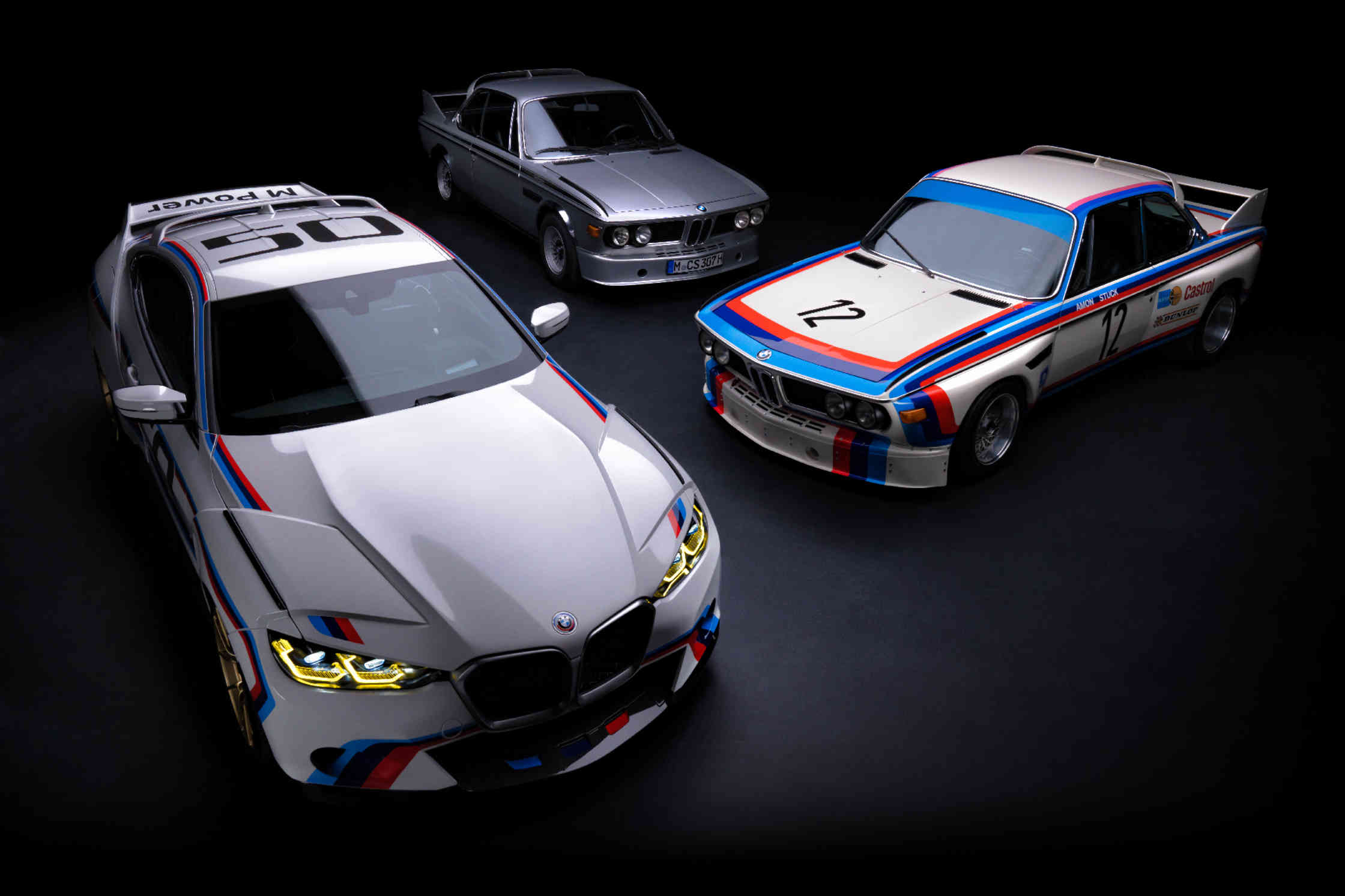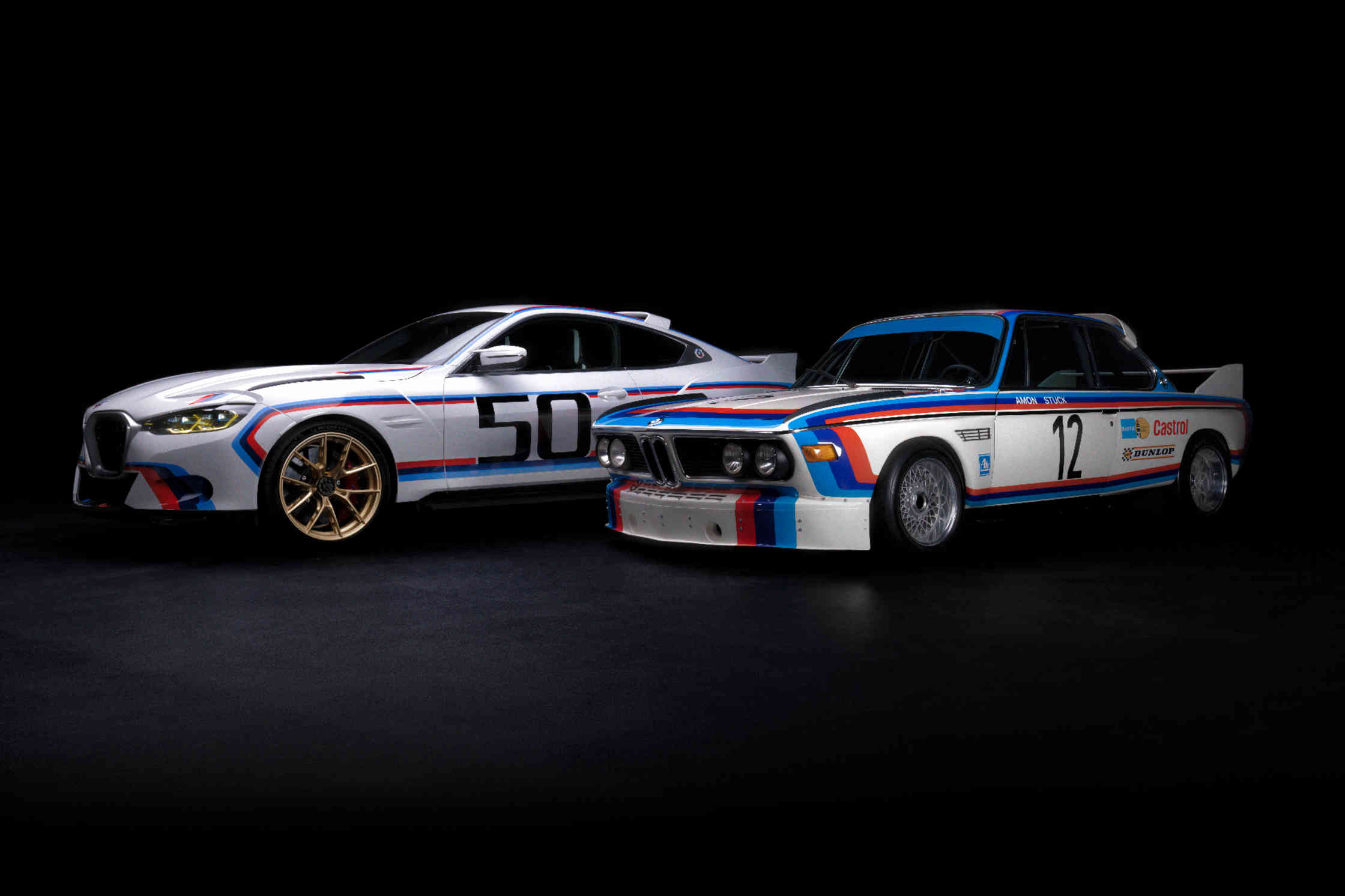With the CSL was laid the first stone of a great tower of success in competition and street models of BMW M, which was born in 1972 as BMW Motorsport, and created this racing version from the 3.0 CS. Manufactured by Karmann, the addition of the L to the name meant more lightness, with a thinner body and aluminum as an essential element for the doors and hoods. In addition, a tailor-made aerodynamic package was designed with that spoiler that earned it the nickname of the "batmobile". The engine gained displacement over time and, therefore, power, reaching almost 480 hp in the last racing versions prepared by Alpina. As for its decoration, both in racing versions and in the exclusive street version nicknamed "batmobile", 3.0 CSL had the honor of being the first BMW to use the tricolor stripes of BMW M Motorsport.
European Touring Car Championship
In competition he was the undisputed king in the European Touring Car Championship, winning six consecutive years from 1973 to 1979 (he won in the inaugural season of this event). But not only dominated the sprint races, in endurance overall victories were achieved in 1975 at the 12 Hours of Sebring, the following year at the 24 Hours of Daytona, and at Le Mans three victories in its category in 1973, 1974 and 1977. It also has the honor of being the first BMW Art Car, specifically the car with the number 93 that raced at Le Mans in '75 and decorated for history by Alexander Calder At the wheel of this BMW legend have been drivers like Toine Hezemans, Hans-Joachim Stuck, Chris Amon and Niki Lauda.
 In the foreground, the new BMW 3.0 CSL. Next to it, the original versions for street and circuit.
In the foreground, the new BMW 3.0 CSL. Next to it, the original versions for street and circuit.
The road version of the racing car, which was developed for homologation purposes, became a widely known symbol of driving pleasure focused on the essentials, especially in its final phase of development. Its trade name CSL stands for "Coupé, Sport, Leichtbau" (Coupé, Sport, Light), a summary that perfectly defined what this car was (and still is).
The importance of aerodynamics in the BMW 3.0 CSL
Aerodynamics, as we mentioned at the beginning, was one of the characteristic elements of this model. In addition to the wide wheel arches, its coupe-like bodywork also received a striking aerodynamic package, which included a front spoiler, air bars on the front side panels and a roof spoiler. Rounding out the design modifications versus BMW's other large-series coupes was a rear spoiler that optimized rear undercarriage grip. It was not homologated for road use and therefore lay in the trunk when the vehicle was delivered, but nevertheless received a lot of attention from the public, resulting in the Coupe being nicknamed the "Batmobile". This aerodynamic element was a considerable improvement in competition, as it allowed the car to be more stable in fast cornering, and not as complicated to drive as in its early days.
With a larger displacement of 3,153 cubic centimeters and an initial maximum output of 206 hp, the most powerful inline six-cylinder engine with direct injection ever used in a BMW model guaranteed a sporty power delivery. The latest racing versions prepared by Alpina reached up to 480 hp.
Its curb weight was only 1,270 kilograms. This low weight was achieved thanks to a lightweight construction made of thin aluminum and steel. The doors were made of aluminum, as were the hood and the trunk lid, which were supported by filigree clamping rods after opening. Numerous other body components, such as the roof, side panels and trunk partition, were made of particularly thin sheet metal, and the chrome bumpers were replaced by plastic skirting boards. Lightweight bucket seats and the omission of insulating material, power steering and electric windows ensured optimum weight reduction. The overall power-to-weight ratio was 6.2 kg per horsepower.
Throughout its existence, as the BMW 3.0 CSL was manufactured between 1971 and 1975, BMW assembled a total of 1,096 units. Today it is one of the most sought-after cars on the market. For a "Batmobile" version, of which only 110 units were produced, it can fetch close to 400,000 eros at auction. The prices, with the passage of time, will go up like the foam, because it is still a very exclusive car, full of history and spectacular for everything that transmits when driving it. Hopefully we will have it very soon in the Soul Auto showcase.
The spirit of the "Batmobile" to reappear in a new limited edition model
On the occasion of the celebration of 50 years of BMW, the Munich firm announced a few weeks ago the launch of a very special version based on the BMW M4. A new model that comes to revive the spirit of the BMW 3.0 CSL. With the same commercial name, the new model will be produced in limited edition. Only 50 lucky ones will be able to enjoy this special version. At the moment, its price and release date is unknown.
 The new BMW 3.0 CSL is based on the circuit model, which participated, among others, in the 24 Hours of Daytona.
The new BMW 3.0 CSL is based on the circuit model, which participated, among others, in the 24 Hours of Daytona.
Production of all vehicles will take about three months. Each and every one of them will be handcrafted at BMW's Dingolfing facility. The unique interior components made of carbon fiber-reinforced plastic (CFRP) will be handcrafted both in Munich and at BMW's component factory in Landshut by specially assigned bodywork specialists.
Under the hood, this special edition has a supercharged 3.0-liter six-cylinder engine with 560 hp and 550 Nm of torque. This engine will only be offered in combination with a 6-speed manual transmission.
Its rolling base consists of a dual-spring front axle and a specifically designed five-arm rear axle. In addition, BMW 3.0 CSL is equipped with an adaptive M suspension with electronically controlled dampers, electromechanical steering with variable ratio and an M carbon-ceramic brake system with adjustable characteristic curves.
The M carbon ceramic brake system will offer powerful deceleration performance, optimized fade stability, outstanding thermal stability and extremely high wear resistance. It combines six-piston fixed caliper brakes and 400×38 millimeter ceramic brake discs on the front axle with single-piston fixed caliper brakes and 380×28 millimeter ceramic brake discs on the rear and features red-painted brake calipers. The M-specific design of the integrated braking system allows two characteristic pedal feel curves to be displayed, which can be selected in the M Setup menu.
To reduce weight in the body and chassis areas, carbon fiber-reinforced plastic (CFRP) is used to an exceptionally high degree, in addition to the minimal use of insulating material. BMW M GmbH is a pioneer in the use of CFRP in series-produced vehicles. As early as 2004, the M3 CSL, equipped with a carbon roof for the first time.
